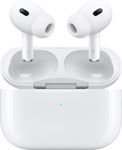After a week of use:
1) The Valencell heart rate monitor is considered one of the good ones in its category, however, in this particular watch, it takes a while to "get going"! When activating the heart rate measurement function, an indication appears after a few seconds, which remains stuck on the same number for a few more seconds before it starts displaying the pulses. However, once it starts, it is relatively accurate, unless there are sudden changes (e.g. HIIT training), which it takes quite a while to detect. For relaxed walking/running, it is at similar levels to zone measurements.
2) Additionally, it does not measure per minute but per 24 hours (if I remember correctly) and displays the min HR of the 12-hour period in a graph. However, one can see their pulse at any given moment by selecting the corresponding function.
3) It has a "do not disturb" mode that disables sounds while simultaneously reducing the clarity of the screen to a level where small letters are almost unreadable! However, it is good to avoid brightness at night (which it doesn't have much of anyway, but oh well!).
4) The screen does not have very good clarity except under specific viewing angles, and it is not particularly bright in dimly lit areas (indoor spaces). However, it generally does not bother.
5) The data display is minimal, while the watch records much more than it displays. For example:
- Min HR of heart rate for a 12-hour period. I would like to have the rest HR and the entire recording of the 24-hour pulses.
- Sleep quality (according to Suunto and Firstbeat, which have the algorithm) expressed as a percentage. It keeps a sleep log for the past week, but only for the total sleep time. Further analysis (e.g. when you fell asleep and woke up, deep sleep hours) is only kept for the most recent night.
- Heart rate zones (automatically or manually set)
- Activity tracker with a guided personalized exercise plan based on fitness level (I have not used it)
- Stress level (i.e. if you are stressed/active/inactive) and resources level (your energy percentage taking into account heart rate variability) and the time period during which you are in this stage (e.g. the past hour).
5) Easy and minimal app on the phone that displays all the information recorded by the watch with nice graphics, maps, and visualization tables. However, it could have more sleep analysis data and 24-hour graphs for stress and resources levels.
6) It does not have GPS but does a very good job in connecting and recording exercise through the phone's GPS. It connects almost automatically.
7) It does not have a touch screen, but it is not necessary. Its minimal functions are well covered by the 5 buttons on the screen.
8) The full user manual is only available online on the Suunto website.
9) If you are looking for a screen protector (which has not yet arrived in Greece), the one for the Garmin Fenix 5 fits perfectly! :-)
10) My battery lasted 5 days with: 3 times activating the GPS for 20 minutes each + almost all other hours with communications turned off (Bluetooth and mobile notifications).
11) IMPORTANT: Bluetooth can be permanently turned off if someone does not want it on (airplane mode)!
12) It does not explicitly say it, but it requires calibration to detect the fitness level! This is done by activating the GPS during the first exercise recordings I think this should be done anyway, even if you don't intend to use the GPS. I think (without putting my hand on the fire) that after calibration, the heart rate monitor readings have stabilized. Before, I had some random numbers, for example 150 beats and immediately after 65 in a resting state.
13) In some submenus, by holding down the middle button, useful shortcuts are displayed.
In my opinion, it is a minimal and beautiful watch that could be priced a little lower!



















